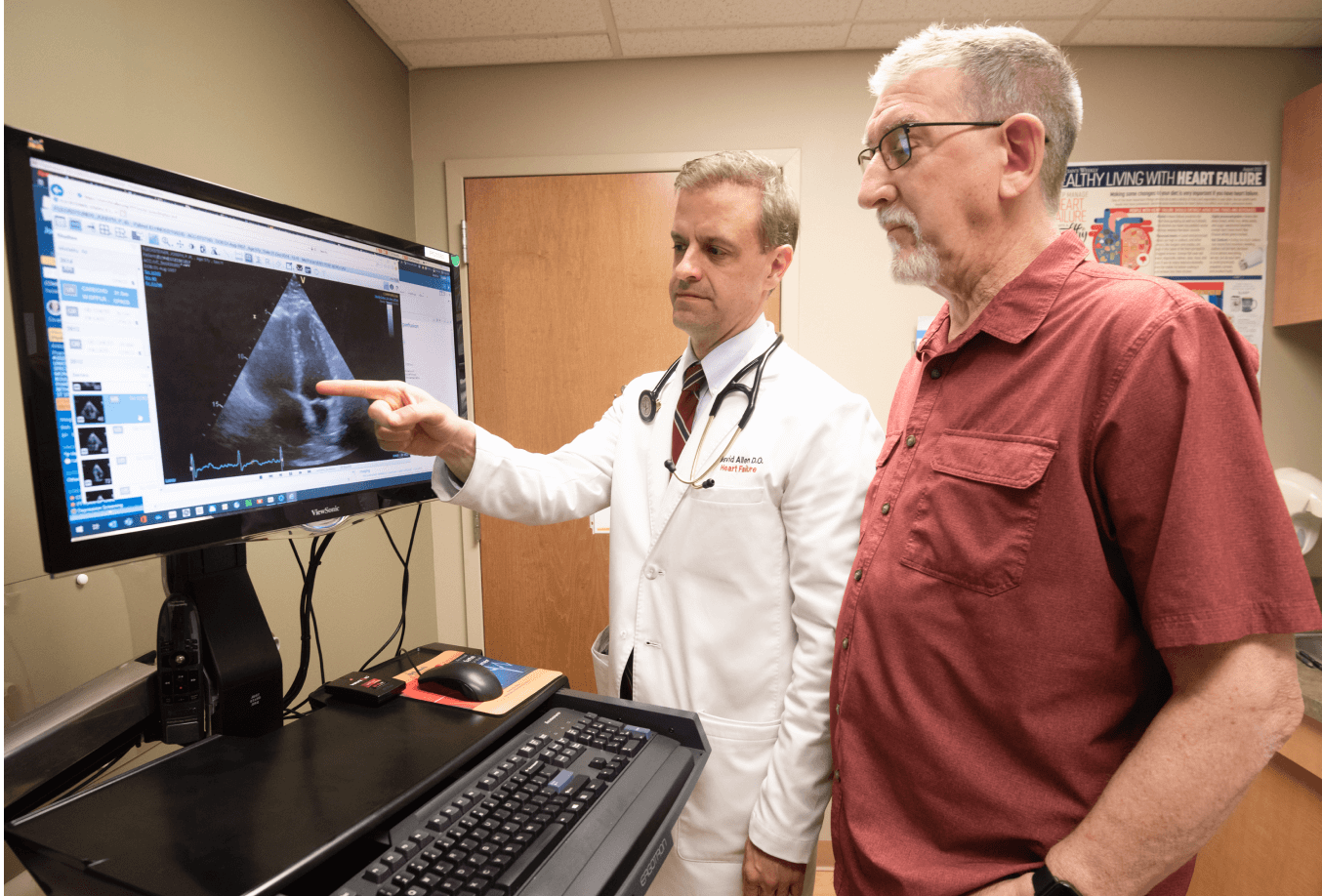Interventional Cardiology
Using catheterization to diagnose and treat heart disease.

Solutions to unblocking your path to heart health
Overview
An alternative to open heart surgery, interventional cardiologists use specialized catheter-based techniques to diagnose and treat coronary artery disease, vascular disease and structural heart disease. These subspecialists are trained to open clogged arteries to allow blood to flow properly and reduce risk of stroke or heart attack and to repair holes in the heart or place special devices in the heart to help it function properly.
Conditions we treat
Coronary artery disease
Coronary artery disease is the most common type of heart disease in the United States, according to the Centers for Disease Control and Prevention. It occurs when the major blood vessels that supply the heart (coronary arteries) struggle to send enough blood, oxygen and nutrients to the heart muscle. The buildup of fatty deposits in your arteries called plaque causes coronary artery disease. Symptoms include chest pain (angina) and shortness of breath. A complete blockage can cause a heart attack. Physicians often treat the disease with an interventional cardiology procedure called angioplasty and stent placement.
Learn more about coronary artery disease
Structural heart disease
The structural heart is a term to collectively describe your heart’s muscle, walls, valves and arteries. They work together to push blood through your heart’s four chambers, out to your brain and other parts of the body, and back to your lungs. Structural heart disease occurs when you’re born with a structural heart defect or a part becomes impaired due to disease, injury or wear. Conditions related to structural heart disease are cardiomyopathy, congenital heart disease and heart valve disease. St. Luke’s offers the latest medications and treatments to treat structural heart disease.
Learn more about structural heart disease
Vascular disease
Vascular disease is a group of conditions that affect the arteries, veins and lymph vessels of the body's circulatory system. It ranges from aortic aneurysm, a serious bulging of the wall of the body's largest blood vessel, to peripheral vascular disease, a narrowing of the blood vessels in the legs. Conditions associated with vascular disease include atherosclerosis (hardening of the arteries), heart attack and stroke.
St. Luke’s vascular disease specialists offer a variety of cutting-edge procedures to diagnose and treat patients with vascular disease and related conditions.
Treatments
Angiography
Angiography or arteriography is a medical imaging technique used to visualize the inside (lumen) of blood vessels and organs of the body, with particular interest in the arteries, veins and the heart chambers.
Angioplasty
Angioplasty is a minimally invasive endovascular procedure used to widen narrowed or obstructed arteries or veins, typically to treat arterial atherosclerosis, more commonly known as hardening of the arteries.
Angioplasty, stenting & atherectomy
Angioplasty is a procedure in which a balloon is inflated to open the vessel. Stent placement occurs after the balloon is used. A mesh frame called a stent is placed in the vessel to support the walls. An atherectomy is when plaque is removed using a rotating shaver or laser.
Balloon valvuloplasty
Doctors may conduct a procedure using a long, thin tube (catheter) to repair a valve with a narrowed opening (valve stenosis). In this procedure, called balloon valvuloplasty, a doctor inserts a catheter with a balloon on the tip into an artery in your arm or groin and guides it to the valve. The doctor performing the procedure then inflates the balloon, which expands the opening of the valve. The balloon is then deflated, and the catheter and balloon are removed.
Cardiac catheterization and invasive cardiology
The cardiac catheterization laboratory (also called the “cath lab”) is a specialized invasive procedure area where many of the invasive cardiac procedures are performed including: coronary and peripheral angiograms, angioplasties/stents, transcatheter aortic valve replacement, balloon valvuloplasty and more.